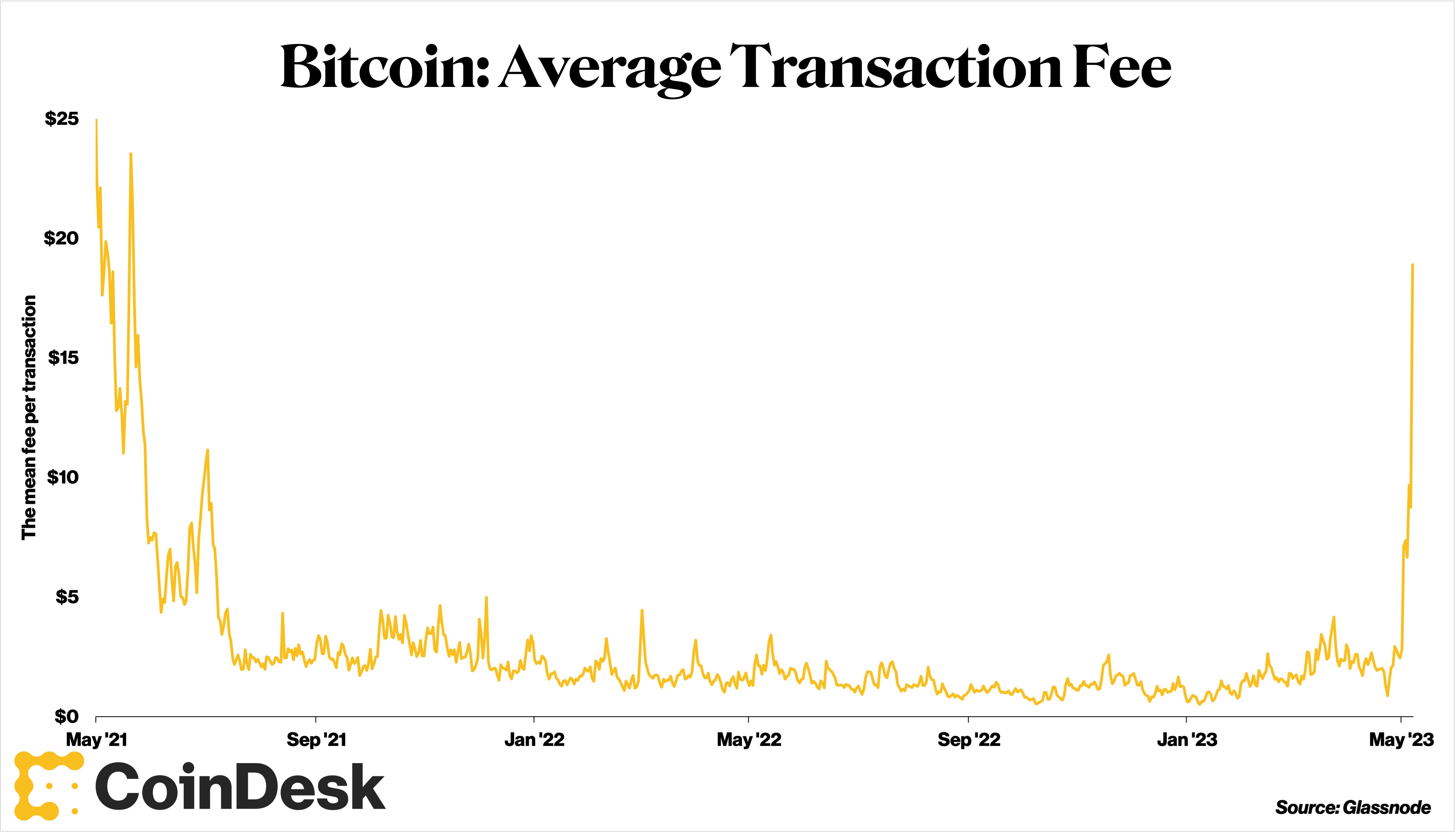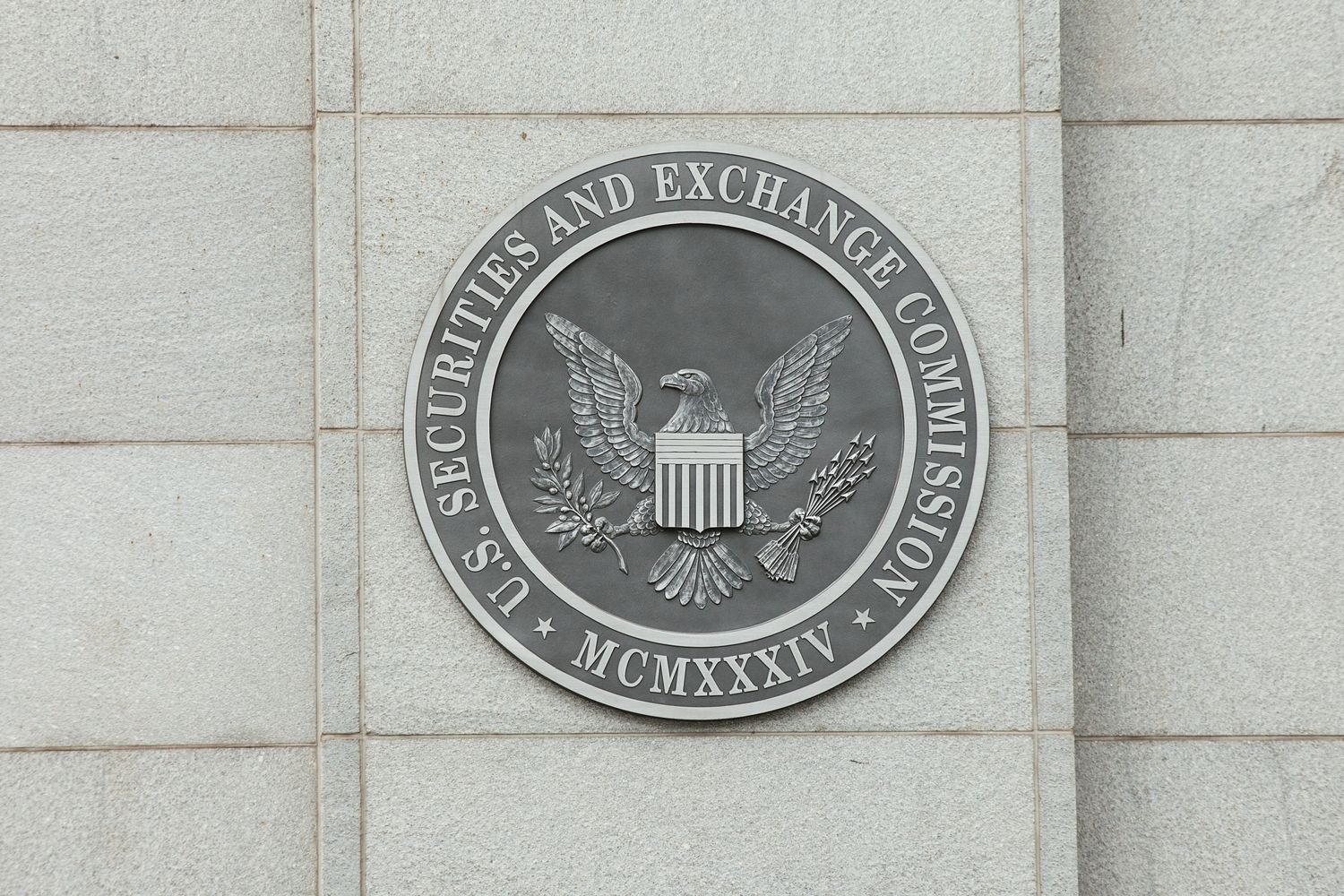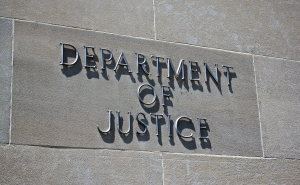If Bitcoin Can’t Handle a Few JPEGs, How Can It Handle the World?
:format(jpg)/www.coindesk.com/resizer/Xsj8Ri2RTmNmhT1RBWW6D6WHryE=/arc-photo-coindesk/arc2-prod/public/MW2CPFVJ2FHJZPMKSZJARX22RU.jpg)
David Z. Morris is CoinDesk’s Chief Insights Columnist. He holds Bitcoin, Ethereum, and small amounts of other crypto assets.
Many bitcoiners have been up in arms about high fees amidst a surge in new activity on the original blockchain. Fees, which are set dynamically by a competitive bidding process, spiked to a staggering $30.19 for a simple bitcoin transaction on May 8, after hovering around $2 since July of 2021 – nearly two years.
The situation is dire enough that some bitcoiners, particularly so-called “maximalists,” have gone so far as proposing censorship of BRC-20 tokens and other assets based on the “ordinals” issuance method. Those assets use new features to inscribe data in bitcoin transactions, and appear to be driving the price spike. There’s an immense amount to be said about the moralistic debate around BRC-20 issuance, but in one surprising development, maximalist figurehead Michael Saylor (the former chief executive of MicroStrategy) has now declared their emergence “bullish.”
This article is excerpted from The Node, CoinDesk’s daily roundup of the most pivotal stories in blockchain and crypto news. You can subscribe to get the full newsletter here.
Leaving aside the question of “what Bitcoin is for,” there’s a much more straightforward takeaway here: Bitcoin isn’t scaling, and blaming ordinals doesn’t change that fact.
The chain would be facing the same scaling issues if only a slightly larger fraction of the world were using it for monetary transactions. That means the BRC-20 kerfuffle, ironically, is ultimately a blow to the very “maximalist” vision held by those currently railing against non-monetary uses of bitcoin.
The explosion of interest in BRC-20 tokens on Bitcoin has driven a huge spike in transaction volume on the base layer network, and in turn driven up transaction prices. There are many different ways to put this congestion in context, but one very good metric is congestion in the Bitcoin mempool. The mempool is where transactions wait to be validated, and are ordered according to the fee bid attached to them. A fuller mempool means more competition to get your transaction into the next block.
Reviewing the data is eye-opening in numerous ways. (I used this straightforward but stellar mempool visualization tool by Jochen Hoenicke, a researcher at smart contract security firm Certora.)
First, by sheer transaction volume, Bitcoin’s mempool has seemingly never been this full – not by a longshot. The last major peak in April of 2021 saw 200,000 transactions waiting in line, but yesterday that number peaked at 450,000. (Hoenicke’s node only tracks back to 2017, but prior to that bull market, Bitcoin congestion and fees were negligible.)
Just as notable, these transactions are often tiny. You can also see, courtesy of bitinfocharts, that the average bitcoin transaction size has plummeted in recent days.

Average Transaction Fee on Bitcoin (Glassnode)
That exploding volume of small transactions seems to confirm that the demand spike has been driven by speculators (and/or future rug-pullers) frantically issuing and minting tokens using the experimental “BRC-20” standard. There’s hype around the tokens right now, and degens seemingly want their $pepes and other casino tokens right now, not in 12 or 14 blocks. Coinmarketcap claims that a staggering 8,500 tokens have been issued on Bitcoin in the mere weeks since the BRC-20 standard was first floated.
Given that these are largely “memecoins” that amount to little more than gambling, the bidding war seems likely to be short-lived. And in fact, fees by May 10 had already declined a bit from their May 8 peak.
But here’s the thing: if even a few million people wanted to actually use Bitcoin to send money peer-to-peer on a regular basis, we’d be in exactly the same position. And it would be permanent, rather than transitory. The calls for Bitcoin censorship from maximalists are arguably incoherent for a number of philosophical reasons, but this practical incoherence is most striking. Bitcoiners upset at a temporary fee spike driven by degens may be better off focusing their energy on solutions to the imminent problem of sustained higher fees driven by everyday users.
Most fundamentally, as Castle Island Ventures co-founder Nic Carter pointed out in these pages yesterday, “high prices are the cure for high prices.” We are seeing this in real time, particularly with Binance integrating the layer 2 “Lightning network” into its bitcoin withdrawal flow. Lightning is purpose-built for removing the load of smaller transactions from the base chain, but it does require a fairly arcane setup for peer-to-peer use. At the same time, Lightning service firms, such as David Marcus’ Lightspark, have a suddenly target-rich environment for making Lightning easier for average Joes.
In this respect, the BRC-20 fee spike seems likely to be a blessing in disguise: A warning shot that should trigger a frenzy of preparation for a sustained barrage.
There is a final, hypothetical irony here. The actual viability of both ordinals and fungible tokens on Bitcoin is still extremely unclear – a significant bug in inscriptions was identified just last week, for instance. But if you squint, it’s not impossible to envision some form of ordinal technology enabling entirely new approaches to scaling Bitcoin, perhaps including “layer 2” technology closer to what Ethereum can accomplish.
That may prove even more distasteful to the maximalist crowd than sharing their mempool with JPEGs and degens. But if you’re actually committed to scaling Bitcoin, it may be time to think bigger.
Learn more about Consensus 2024, CoinDesk’s longest-running and most influential event that brings together all sides of crypto, blockchain and Web3. Head to consensus.coindesk.com to register and buy your pass now.
DISCLOSURE
Please note that our
privacy policy,
terms of use,
cookies,
and
do not sell my personal information
has been updated
.
The leader in news and information on cryptocurrency, digital assets and the future of money, CoinDesk is a media outlet that strives for the highest journalistic standards and abides by a
strict set of editorial policies.
CoinDesk is an independent operating subsidiary of
Digital Currency Group,
which invests in
cryptocurrencies
and blockchain
startups.
As part of their compensation, certain CoinDesk employees, including editorial employees, may receive exposure to DCG equity in the form of
stock appreciation rights,
which vest over a multi-year period. CoinDesk journalists are not allowed to purchase stock outright in DCG
.
:format(jpg)/www.coindesk.com/resizer/Xsj8Ri2RTmNmhT1RBWW6D6WHryE=/arc-photo-coindesk/arc2-prod/public/MW2CPFVJ2FHJZPMKSZJARX22RU.jpg)
David Z. Morris is CoinDesk’s Chief Insights Columnist. He holds Bitcoin, Ethereum, and small amounts of other crypto assets.









